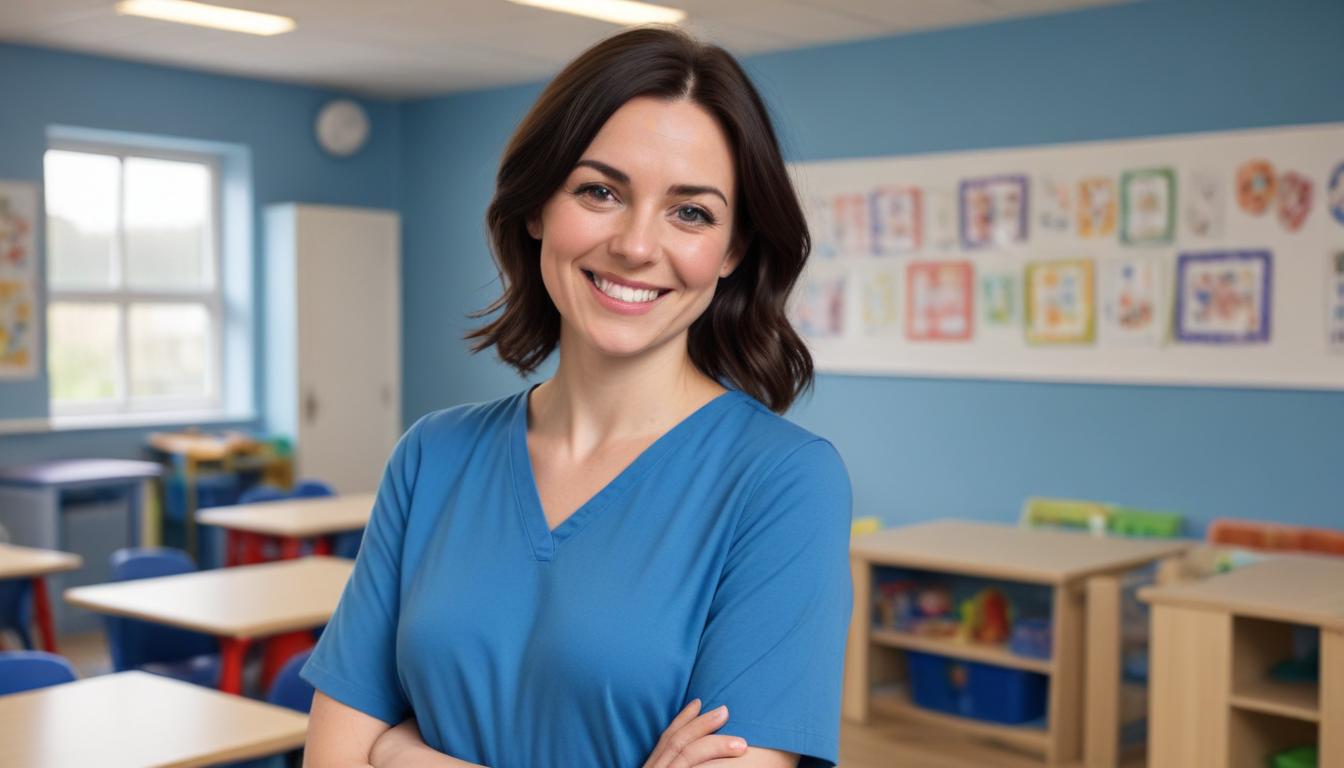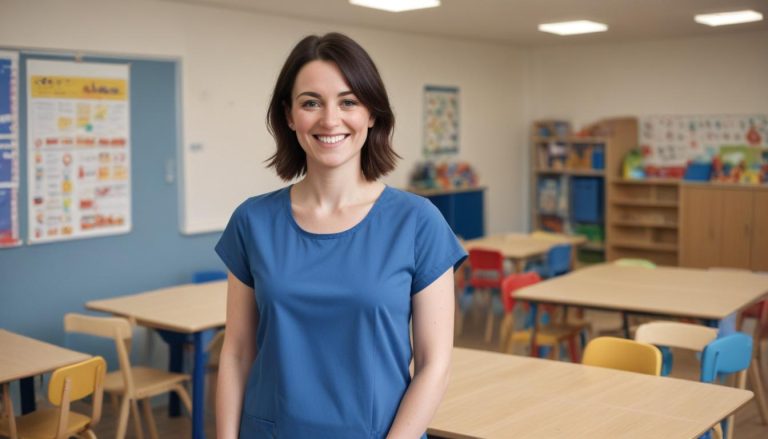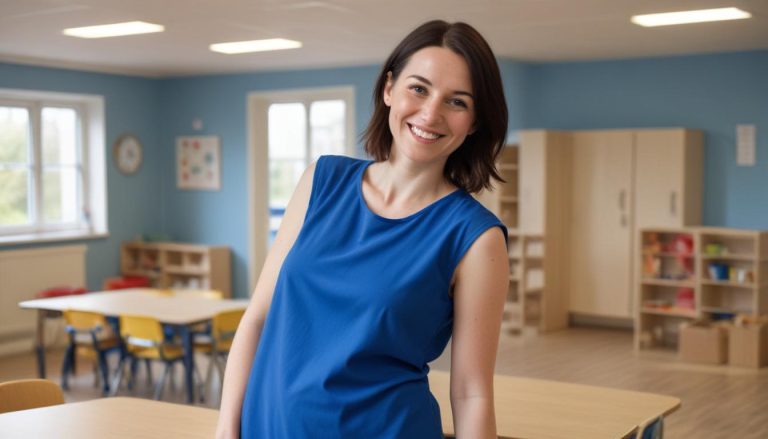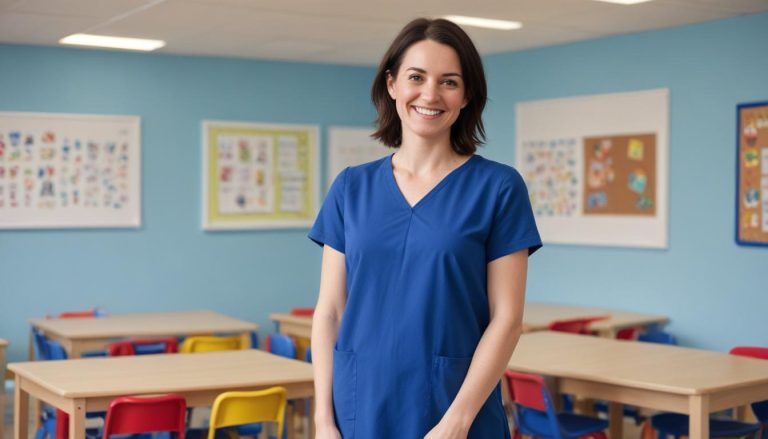This guide will help you answer 5.1 Explain the terms: • co-regulation • self-regulation.
Both co-regulation and self-regulation are important concepts in early years education. They describe how children manage their emotions, behaviour, and responses to situations. Knowing these terms helps childcare workers support children’s emotional and social development effectively.
What is Co-regulation?
Co-regulation refers to the process where an adult actively supports a child in managing their emotions and behaviour. This is often necessary for younger children, as they are still developing the skills needed to regulate themselves.
Children, especially those in the early years, do not yet have the ability to fully control their emotions and reactions. This is where the adult’s role comes in. Through their guidance, children can start to learn strategies for managing strong feelings or difficult situations.
Key Points of Co-regulation
- Adult Support: The adult provides calm, consistent, and reassuring interactions to help the child. This includes staying emotionally present during moments of distress.
- Emotion Modelling: Adults show children how to respond to emotions like anger, disappointment, or frustration by modelling appropriate behaviours.
- Teaching Strategies: Adults may help children develop techniques, such as deep breathing, to calm themselves over time.
- Building Trust: A secure emotional connection between adult and child encourages the child to feel safe and supported. This makes it easier for them to eventually regulate independently.
Examples of Co-regulation
- A toddler is upset because another child has taken their toy. Instead of expecting them to handle it alone, the practitioner kneels down, uses a calm tone, and says, “I understand you’re upset. Let’s talk to [child’s name] together and find a solution.” This shows empathy while also teaching a way to respond.
- During a tantrum, an adult stays close, keeping their voice low and soothing. The adult might say, “It’s hard when you feel like this, but I’m here to help you calm down.”
Co-regulation often involves these small but meaningful interactions. Children gradually learn to handle similar situations without needing the same level of external help.
What is Self-regulation?
Self-regulation develops as children grow and mature. It refers to a child’s ability to understand and control their thoughts, actions, and emotions. This skill is essential for managing daily challenges. It allows children to adapt their behaviour depending on the situation.
Self-regulation doesn’t develop overnight. It is a gradual process — often supported by co-regulation in the earlier years of life. Self-regulation follows as children begin applying what they’ve learned from adults to manage on their own.
Key Points of Self-regulation
- Personal Control: A child practices thinking before acting, controlling impulses, and adjusting reactions.
- Delayed Gratification: A child understands they may need to wait for something, such as taking turns or sharing, and can manage their emotions during the wait.
- Understand Consequences: Self-regulation includes being able to anticipate the results of their actions and choose behaviour accordingly.
Examples of Self-regulation
- A four-year-old is told they can play with a toy after lunch. Instead of crying or getting angry, they occupy themselves with a book until the toy is available.
- During group activities, a child resists the urge to shout out and raises their hand instead.
These examples show that self-regulation allows children to respond to situations in healthier and more socially acceptable ways.
How Co-regulation Leads to Self-regulation
Co-regulation acts as the foundation for self-regulation. In their first few years, children are unable to manage emotions on their own. Practitioners and caregivers step in to provide co-regulation by being emotionally available and guiding children through challenging moments.
Through repeated experiences of co-regulation, children begin to internalise these lessons. As they grow, they start applying these skills independently. Self-regulation is most evident as children enter preschool and beyond when they show more control over their thoughts and behaviour.
Stages of Development
Self-regulation doesn’t happen all at once. It develops gradually through the following stages:
- Infancy: Babies rely entirely on caregivers for emotional comfort and behavioural control. They cannot self-soothe yet. Co-regulation at this stage means holding, rocking, and speaking soothingly when a baby cries.
- Toddler Stage: Toddlers externalise their emotions, such as crying or having tantrums. Adults help by identifying their feelings and modelling calmer responses. For example, saying, “I see you’re frustrated that your toy broke. Let’s fix it together.”
- Preschool Years: With consistent scaffolding and co-regulated experiences, preschoolers start developing basic self-regulation. They learn simple strategies to calm down, such as taking a deep breath or asking for help.
- Early Primary Years: By this time, most children demonstrate self-regulation in everyday settings like school. They can concentrate on tasks, handle disappointment, and interact appropriately with peers.
Strategies to Support Co-regulation
Practitioners often support co-regulation using specific approaches. These strategies work well within early years settings where children may struggle with emotions or disputes.
Effective Co-regulation Techniques
- Stay Calm: A calm adult helps prevent the escalation of a child’s emotions.
- Reflect Their Emotions: Acknowledge how the child feels, such as saying, “You look upset that it’s tidy-up time.”
- Offer Choices: Giving children simple choices can help them feel some control over the situation, e.g., “Do you want to tidy the blocks or the books first?”
- Use Soothing Voices and Gestures: This can help settle children during high-intensity moments.
Strategies to Encourage Self-regulation
Once children show readiness, adults can start actively encouraging them to apply self-regulation skills. Using structured approaches helps children practise this skill in different settings.
Supporting Self-regulation Skills
- Teach Emotional Language: Help children name their feelings. A better understanding of emotions enables them to label a situation before reacting impulsively. For example, saying, “I see you’re feeling angry because [reason].”
- Introduce Coping Strategies: Introduce simple calming mechanisms, such as counting to ten, asking for help, or using breathing exercises.
- Model Patience: Practise waiting during group activities to demonstrate how waiting is manageable.
- Praise Progress: Verbal encouragement when a child shows self-regulation reinforces the behaviour. For example, “I saw you took turns with your friend! That was great sharing.”
Benefits of Understanding Co-regulation and Self-regulation
These skills go beyond the early years setting. They prepare children for life within school, among family, and even into adulthood. Practitioners play an important role in setting the stage for this development by providing consistent support and guidance.
Key Benefits for Children
- Emotional Resilience: Children cope better with challenges, setbacks, and changes in their environment.
- Social Skills: Self-regulation improves relationships, as children learn sharing, patience, and empathy.
- Academic Success: Good self-regulation enables children to focus, manage time, and follow instructions.
- Lifelong Skills: Self-regulation links to success in life, as personal and professional environments often demand patience, reflection, and calm decision-making.
Recognising the Need for Co-regulation
Some children may struggle with regulation more than others. It’s vital to adjust support to their individual needs.
Children Who May Need Extra Co-regulation
- Younger Age Groups: Particularly babies and toddlers who are naturally reliant on caregivers.
- Children with Additional Needs: For example, those with autism spectrum disorder or attachment difficulties may require more co-regulation.
- Trauma or Adversity: A child exposed to stress, such as a bereavement or family conflict, may temporarily regress and depend more on adult regulation until they feel emotionally safe again.
Your Role in Supporting Regulation
Early years practitioners directly influence how children move from co-regulation to successful self-regulation. The way adults respond, teach, and model behaviour provides lifelong tools for managing emotions and actions. By being consistent, calm, and patient with children, you help them build the skills they need to succeed both now and in the future.
Subscribe to Newsletter
Get the latest news and updates from Care Learning and be first to know about our free courses when they launch.







